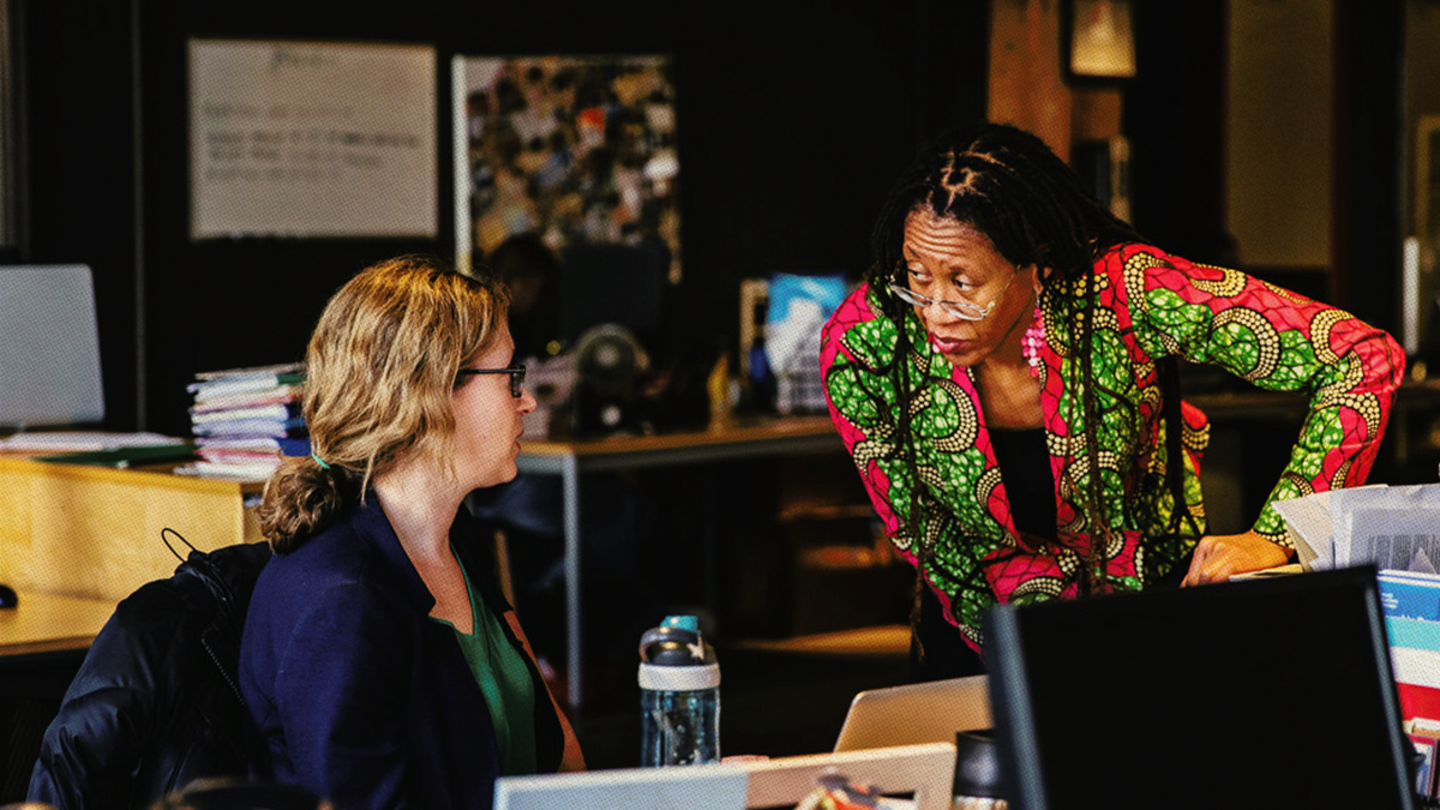The Pell Grant is one of America’s signature education investments, providing low-income students with funding to pursue higher education — as long as they are seeking a traditional four-year college degree.
In a piece published last October, Steve Taylor, Stand Together’s director and senior fellow for Future of Work, shared the experience of Alix Petkov, a student who received and used Pell Grants in an attempt to attain a college degree. He switched majors twice and eventually quit college altogether, realizing that skills-based certification courses would better equip him to pursue a career in IT. By then, however, Petkov had accumulated nearly $20,000 in debt.
“Like millions of other learners, Petkov was forced into an outdated and bureaucratic model of higher education that’s not designed for how people navigate learning and work today,” Taylor said.
Initially created as part of the Higher Education Act of 1965, the Pell Grant provides need-based funds from the federal government to low-income learners on a yearly basis. Unlike student loans, they don’t have to be repaid, thus making higher education accessible to many who wouldn’t otherwise be able to afford it.
Over the decades, the financial assistance the grant provides has waned due to soaring college costs. The current maximum funding amount per school year is $6,895, but the average cost of tuition for a year at a public or private college is anywhere from $10,662 to $42,162. The federal response has been to increase funding for the Pell Grant — but that’s putting attention on the wrong solution.
Rather than funneling more taxpayer subsidies to colleges, Taylor said, the grant itself should be reworked to adapt to today’s broader and more individualized landscape of education options. As it stands, the Pell Grant offers a narrow, one-size-fits-all approach to education — but that’s simply unacceptable when so many high-quality college alternatives exist.
The marketplace for skills, learning styles, and education pathways has made it clear that a four-year degree is far from the only option that should be accessible to students. However, low-income students who rely on the Pell Grant to access higher education are excluded from exploring routes that are better tailored to their goals and interests because of limitations on where students can use the funds.
“As a first-generation college student and Pell Grant recipient, I understand firsthand the value of the grant,” Taylor said. “It’s society’s down payment to open the door for individuals from low-income backgrounds to pursue higher education. And the grant served its intended purpose — it has opened the door to opportunity for millions of Americans — but what we’d like to see is a marketplace where students can use their Pell dollars for college or any higher ed alternative option that helps them achieve their expected outcome.”
As the price of a four-year college rises, some employers are creating roles that don’t require degrees. Vocational training, certification programs, sub-degree credentials, or any combination of these offer more flexible options that can meet different learning styles and strengths. If the Pell Grant follows suit and supports access to college alternatives, it could reinvigorate the education landscape and create more avenues for individuals to pursue purposeful work.
Employers also stand to benefit by having access to a wider pool of skilled talent to fill crucial roles. At its core, more flexible use of the Pell Grant would empower a generation to strengthen their unique talents and realize their full potential.
About that college degree of yours…
Rising student loan debt is leading more Americans to question the value of that diploma. Add to that a vastly different post-COVID education landscape, and the four-year degree just isn’t cutting it anymore.
Roughly 40 million Americans currently hold around $1.6 trillion in student debt. The average person is grappling with around $39,000 owed for their four-year degree.
Increasingly, that debt isn’t translating to students earning back what they spent any time soon. It’s estimated that about 60% of emerging jobs will not require a bachelor’s or associate degree. Two-thirds of Americans believe that employers value skills much more than degrees when hiring new employees.
With the traditional route far too expensive and less professionally valuable than it once was, students, workers, and employers alike are turning their attention to degree alternatives. Trade schools, sub-degree programs, apprenticeships, and technical certifications are all quicker, less costly, and more directly applicable than a four-year degree for many jobs.
The problem is that low-income learners are locked into degree pathways because of government guardrails that effectively proclaim college is the “safe” choice. Federal student aid programs, including the Pell Grant, heavily favor a college-going route, and without other financial support available to them, many low-income students are forced to make an either-or choice: pursue a college degree or risk no postsecondary education.
“Rising college costs and pervasive underemployment of college graduates has led many people to question the value and relevance of a college degree,” Taylor said. “Low-income students who don't have access to alternative financing or don't have the disposable income to pay for outside education or training themselves are locked out,” effectively restricting choice for low-income learners. “You can go to college. Other alternatives are not accessible or open to you, even if you want to pursue them.”
This doesn’t mean that a four-year degree is wrong for everyone. Nor does it discount the socioeconomic benefits of a degree over one’s lifetime. But a degree does not need to be the first or only option available to learners. We must end the “us vs. them” mentality around opening the Pell Grant to alternatives and instead see it as broadening the landscape with multiple learning pathways that will narrow opportunity gaps.
Enabling students to use Pell Grants for skills-based credentials and other noncollege pathways empowers them with the autonomy to discover their interests and develop their skills and aptitudes through options aligned with their learning styles, goals, and timelines.
So why should the country’s most prominent postsecondary education investment be one-size-fits-all? It shouldn’t.
Sign up for Stand Together's Rethinking Work & Learning newsletter to get the latest stories, ideas, and trends on the future of employment.
With an expanded Pell Grant, both workers and employers win
Students aren’t the only ones who stand to benefit from a more flexible approach to the Pell Grant. Employers across all sectors have reason to invest in making alternative education more accessible and affordable to learners.
Improving access to skills-based education opens opportunities for a broader swath of the population to realize their full potential. That in turn benefits employers, who can access a wider pool of skilled talent to fill needed positions. Skills-based credentials enable individuals to more quickly obtain meaningful work, and when they feel valued for their contribution, it improves employee retention and job satisfaction.
Taylor suggested an education-to-work ecosystem in which employers openly collaborate with education providers to design and develop programs that connect students with job opportunities. For instance, skills-based learning programs like Pursuit and Per Scholas have long-standing relationships with major companies, allowing learners who complete their programs to immediately connect with potential employers.
“It’s mutually beneficial,” Taylor said. “The learner is getting a career-connected education, in some cases real-world experience. Employers are getting somebody who they know is showing up with the skills they need and the skills they trust because they’ve had a direct role with these providers in their curriculum, the certifications, or the credentials.”
Unlike traditional four-year colleges, these alternative education options are often more flexible than degrees and evolve to meet changing labor market demands. As industries shift, employers know the workers they’re hiring have received an education grounded in the current realities and needs of their businesses — not a static, years-old curriculum.
Broadening Pell Grants to be more inclusive could influence hiring mindsets. Instead of valuing individuals based on a degree they may or may not have, employers would more readily look at workers’ unique talents, passions, and desires to contribute. It moves us toward an education and work ecosystem that recognizes the dignity of every individual and values their ability to contribute to society rather than minimizing them to a piece of paper.
Education is about far more than just getting a job: It’s about finding purpose, empowering individuals to contribute in their communities via work and civic participation, and living a life of meaning and purpose.
What the Pell Grant could become, and how to get there
Why isn’t a truly learner-centered Pell Grant an option?
Many lawmakers hold that traditional college degrees are a “safe bet” because they’re accredited, meaning they effectively have a government stamp of approval. According to Taylor, lawmakers feel more comfortable allocating funds toward degrees because college degrees have resulted in economic opportunity for millions of individuals over several decades (in the form of graduates attaining decent jobs and earning living wages). Still, millions of learners who pursued the “safe” college option didn’t reap any benefits: They have debt with no degree or a degree that left them underemployed and unable to pay back their loans.
The government-approved option — accredited colleges — has failed millions of learners. It’s time to consider other options that may not conform to the government’s “safe” pathway. Taylor noted that for lawmakers to consider expanding the Pell Grant, they will likely first require proof that doing so will deliver good outcomes.
That’s both an exciting opportunity and a call to action. Communities can make an expanded Pell Grant a reality faster than if it were left up to a slow-moving bureaucratic system. Change starts with communities and partnerships at the local and state levels. Lawmakers and philanthropists can use more flexible funding to support alternative education programs and demonstrate those programs’ effectiveness in putting individuals on paths of economic prosperity.
“We can’t wait,” Taylor said. “We have to create the conditions for innovative finance models, for the private sector to show up with outcome-based loans or skills savings accounts to make these possible, because otherwise for 10 years low-income students are just going to be locked out of these pathways.”
If we do succeed, the effects could be transformational.
“Right now, degrees and colleges are the means and the predominant signal that somebody has the skills needed to succeed in the workplace,” Taylor said. However, if we meet the moment to collaborate on bottom-up solutions, “we'll move into an economy where skills become the currency, and people acquire skills in multiple pathways or settings. Maybe it's not a formal learning opportunity at all. Maybe it's a blend of college and alternative providers, but it's going to flip the paradigm. Colleges and universities won't hold the power.”
***
The Stand Together community partners with changemakers who are tackling the root causes of America’s biggest problems.
Learn more about Stand Together’s efforts to transform the future of work, and explore ways you can partner with us.

Here’s how to bridge the disconnect between employers and employees.

Lessons learned from Colorado.

Could a program built to develop music talent change the way we think about education?

How to help the talent of today fill the jobs of tomorrow.
